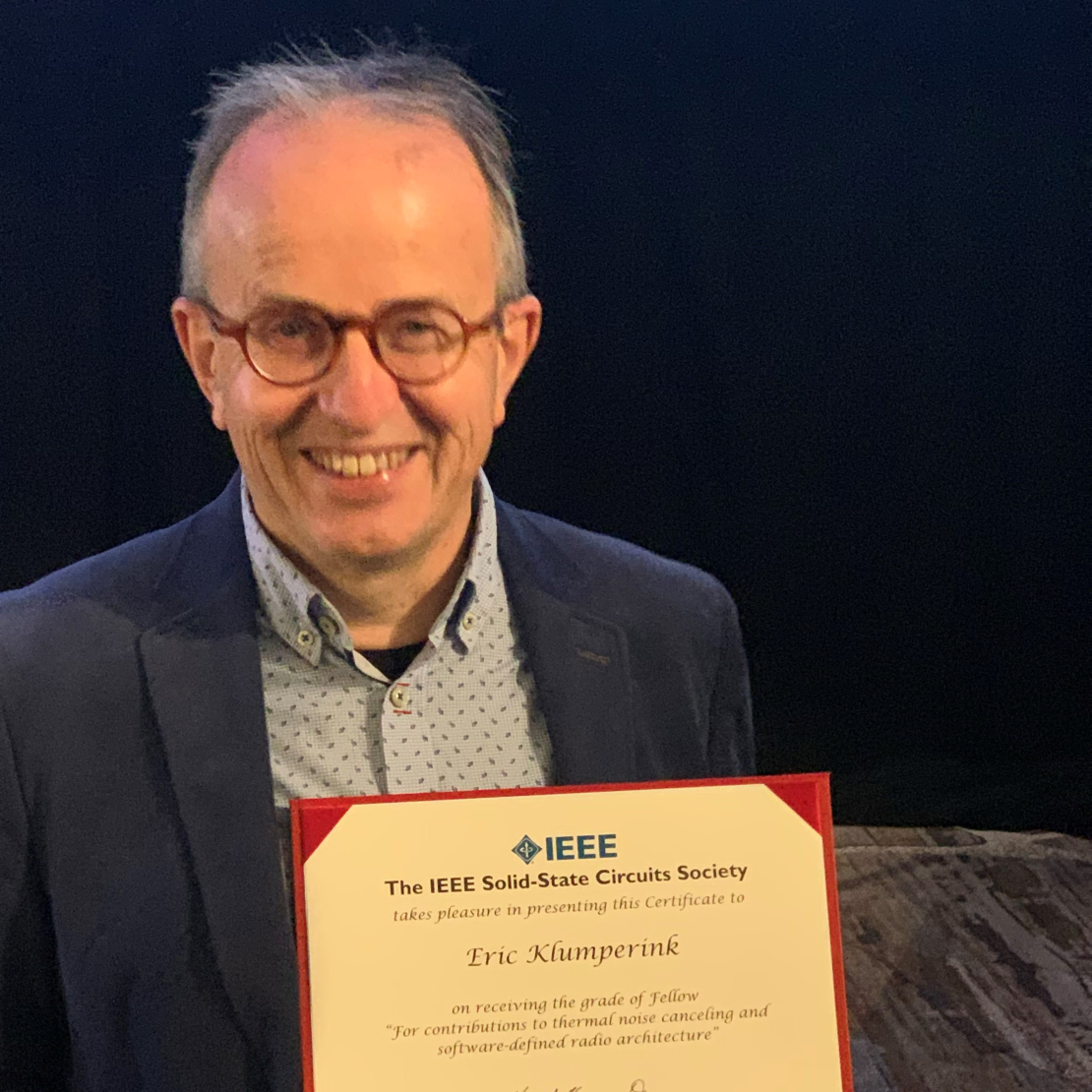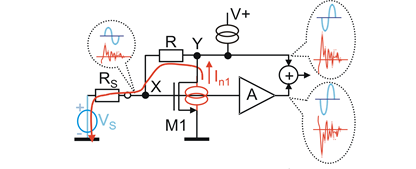UT researcher Eric Klumperink, associate professor in the research group Integrated Circuit Design, has been named 2020 IEEE Fellow. This prestigious fellowship acknowledges Eric’s “contributions to thermal noise cancelling and software defined radio architecture”. This Monday, 17th of February he received the “IEEE Fellow plaque” in San Francisco during the International Solid-State Circuits Conference.

Software defined radio architecture
You might know radio 3FM. This is a radio channel in the FM radio band, a range of electromagnetic frequencies between 88MHz and 108 MHz, reserved for audio broadcasting. Different frequency bands serve different purposes, where broadcasting is replaced by mobile wireless communication. You can still listen to 3FM if you have an antenna and a radio (hardware) architecture that selects the 3FM channel, while ignoring all others. “Resonator filters” commonly realize this selectivity, but are bulky and expensive, compared to integrated circuits (chips). This was acceptable in the past, but becomes unpractical now radio architectures should serve wireless communication and internet access in numerous frequency bands, Bluetooth, WiFi, 3G, 4G, 5G for example. Actually, we ran out of names and instead started numbering bands from n1 to n261 and beyond! “You don’t want to add physical filters for each new band in a device that has to be small like a mobile phone”, says professor Klumperink.
Instead of hardware filters, radio architectures currently use software defined filters and a software defined radio on a single chip. To enable this, the IC Design group from the University of Twente has contributed several new architectures, for example, the “N-path filter”, “Mixer-first receiver” and “Thermal Noise Cancellation receiver”. The latter technique was specifically mentioned in the IEEE fellow nomination of professor Klumperink.

Figure 1 Receiver that reduces thermal noise.
Thermal Noise reduction
Weak radio signals coming from distant radio transmitters, are not only disturbed by other signals (interference) but also by so-called thermal noise. This noise results from random movements from particles, like the electrons in electronic components, which increases with absolute temperature. This was considered unavoidable, but when Klumperink systematically explored amplifier architectures he discovered an amplifier that has two signal paths with correlated but with opposite noise, which can cancel each other. In cooperation with Federico Bruccoleri and professor Bram Nauta, the technique was improved and has now become a “textbook circuit technique” widely used in mobile phones and other radio communication devices.
The IEEE Grade of Fellow
The IEEE Grade of Fellow is conferred by the IEEE Board of Directors upon a person with an outstanding record of accomplishments in any of the IEEE fields of interest. The total number selected in any one year cannot exceed one-tenth of one-percent of the total voting membership. IEEE Fellow is the highest grade of membership and is recognized by the technical community as a prestigious honour and an important career achievement.





